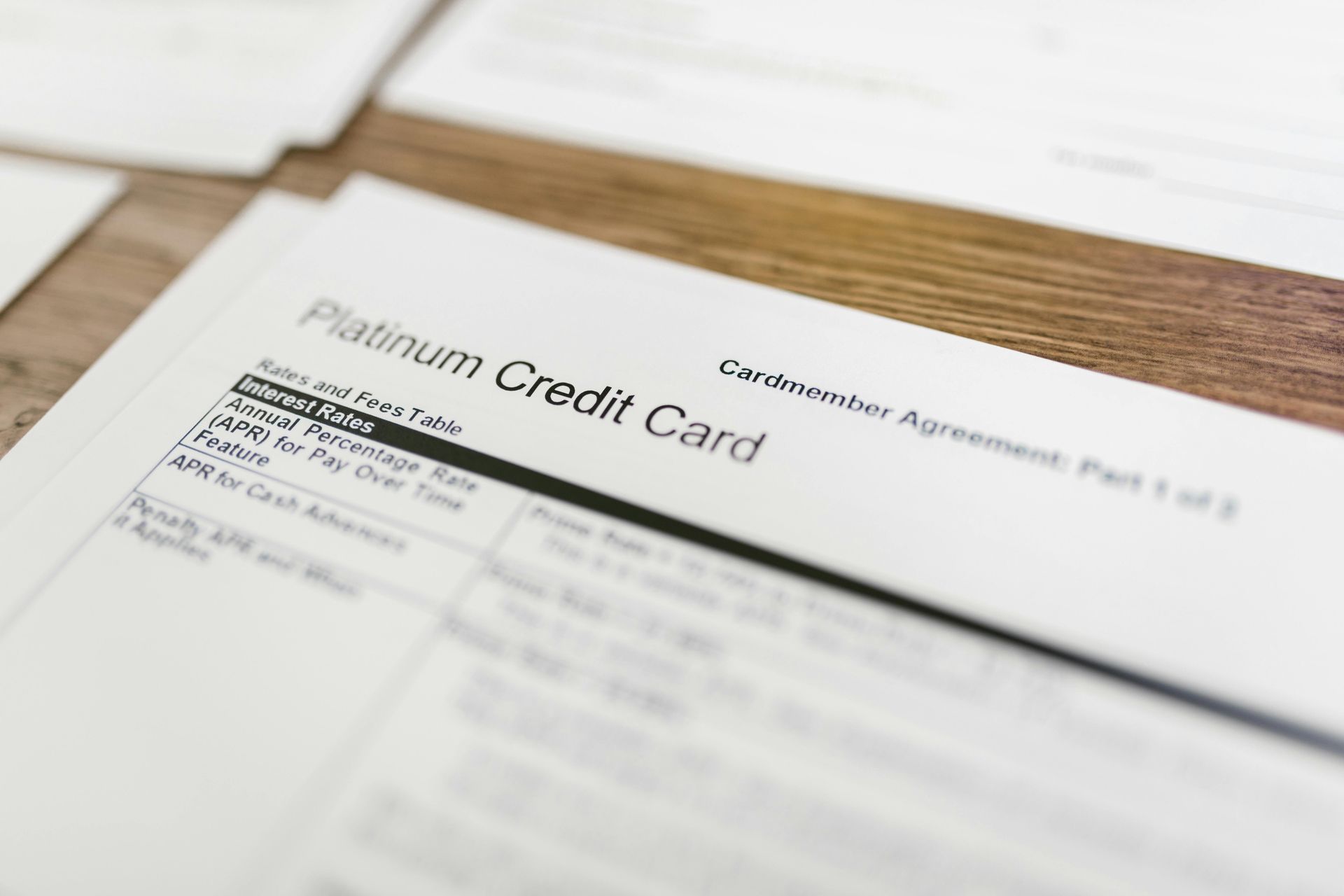How to Decorate Your Apartment Without Damaging It or Losing Your Security Deposit
This is a subtitle for your new post
Your apartment is your space to express yourself, even if you're renting. Many renters worry that decorating can lead to losing their security deposit due to damage. But, you can transform your living space without causing harm and still retain your deposit. By choosing the right decorating techniques and materials, you can add personality to your home while staying within the rules of your lease.
Whether it's through removable wall decals or clever furniture choices, there are plenty of ways to maximize your apartment's aesthetic appeal. You don't need to compromise on style just because you’re renting. Embrace temporary decorating options that reflect your tastes without the risk of permanent damage.
Getting creative with your decor not only brings life to your apartment but also ensures that your security deposit is safe. Discover how to make your space shine without the worry of penalties when it’s time to move out.
Key Takeaways
- Understand your lease to know what changes you can make safely.
- Use damage-free options to personalize your walls and furnishings.
- Choose decor that adds character without causing permanent marks.
Understanding Your Lease Agreement
Knowing the details of your lease agreement is essential for decorating your apartment without risking your security deposit. Pay attention to the nuances in your contract and how wear and tear is defined. Understanding these elements helps you make informed decisions.
Rental Contract Nuances
Your lease agreement outlines what you can and cannot do in your rental space. Look for specific clauses related to alterations, painting, or hanging items on the walls. Some landlords may require written permission for any changes, while others might allow minor updates without concern.
Check for any restrictions. For example, if the lease states you cannot drill holes or use specific adhesives, following these rules helps protect your deposit. Always keep a copy of your agreement handy to refer to before making changes.
Security Deposit and Wear and Tear
A security deposit protects the landlord from damages caused by tenants. Understanding how "wear and tear" is defined is crucial. Generally, natural wear from living in the space, like faded paint or carpet wear, is expected. However, damages like holes in walls or broken fixtures can lead to deposit deductions.
Before you start decorating, clarify what your landlord considers normal wear and tear. Make a list of potential concerns, along with your plans. This way, you can seek written permission for any significant changes, helping you protect your security deposit while creating a welcoming home.
Maximizing Walls Without Damage
You can enhance your apartment walls without causing any damage. Use creative options like removable wallpaper, wall decals, and gallery walls to express your style while keeping your security deposit safe.
Removable Wallpaper and Decals
Removable wallpaper is a fantastic way to add color and design to your walls. It comes in a variety of patterns and textures. Installation is simple: just peel off the backing and stick it on the wall. When you’re ready to move out, simply peel it off without any residue left behind.
Wall decals offer a similar non-damaging option. These are often made of vinyl and can be repositioned easily. They can add fun designs or inspirational quotes. Use them to create focal points in any room. Make sure to follow the manufacturer’s instructions for the best results.
Creating a Gallery Wall
A gallery wall is a great way to display your favorite art, photos, or prints. To do this without causing damage, use removable adhesive strips or washi tape. This way, you can easily arrange and rearrange your pieces.
Start by laying your pieces on the floor to experiment with layout. Once satisfied, mark the spots on the wall with a pencil. Use the strips to hang your frames. This not only personalizes your space but also makes a striking visual impact.
Accent Wall Ideas
Creating an accent wall can transform a room's look. You don’t need paint or nails; you can use removable wallpaper to create a bold statement wall. Choose one wall to focus on with a striking pattern or color that stands out.
Another option is to use fabric or tapestry. Simply hang it using adhesive hooks. This can also soften a room's appearance and add texture. Choose items that reflect your personality and style while ensuring they’re easy to remove.
Furnishings and Decor That Preserve Your Deposit
Choosing the right furnishings and decor can help you personalize your apartment without risking your security deposit. By focusing on flexible and non-permanent items, you can create a homey atmosphere while keeping your landlord happy.
Interchangeable Textiles
Textiles are a simple way to add color and style without damaging your walls. Rugs and area rugs can define spaces and add comfort, and they also protect floors from scratches. Choose removable floor mats for high-traffic areas to prevent wear.
Throw pillows in various patterns and colors offer versatility. You can easily change them with the seasons or your mood. Curtains add privacy and warmth without any permanent changes to your space. Use tension rods that don’t require nails for easy installation.
Consider using contact paper on cabinet doors for a fresh look. It’s easy to remove and leaves no marks behind. With these textile options, you can refresh your decor without worrying about losing your deposit.
Furniture Choices for Renters
Opt for furniture that is functional yet easy to move. Side tables with built-in storage can help save space and keep your apartment organized. Look for items that don’t require assembly or that can be easily disassembled when you move out.
Instead of heavy furniture, choose lighter pieces that can be rearranged without damage to the floors or walls. Wall hooks are perfect for hanging decorative items while avoiding potential damage.
Removable decorations, such as peel-and-stick murals or decals, allow you to personalize your space without leaving permanent marks when it’s time to move. These choices help keep your apartment looking stylish while protecting your security deposit.
Adding Life and Character
Bringing life and character into your apartment can be achieved through simple yet effective decorating hacks. Using plants and mirrors can make your space feel warm, inviting, and larger than it is. Let's explore how to use these elements to enhance your living environment.
Incorporating Plants
Adding plants is one of the easiest and most impactful ways to brighten up your apartment. They introduce color and improve air quality. Choose low-maintenance options like snake plants, pothos, or succulents if you're new to plant care.
Consider using decorative pots that complement your decor style. Place them on windowsills, shelves, or as centerpieces on tables. Hanging plants can also utilize vertical space, making small areas feel livelier.
Strategically grouping plants can create visual interest. Mix different heights and textures for a natural look. Remember to check sunlight requirements, so your plants thrive in your specific environment.
Using Mirrors to Enhance Space
Mirrors are powerful tools for transforming your space. They create an illusion of depth, making small areas appear bigger. Hang a large mirror on a wall opposite a window to reflect light and make the room feel brighter.
You can also use smaller mirrors as decorative accents. Try arranging several in a gallery-style on one wall. This adds character and can become a conversation starter.
When selecting mirrors, choose frames that match your style, whether it's modern or vintage. Proper placement is crucial; ensure they reflect something visually appealing, like artwork or a beautiful view. This simple decor trick can enhance your apartment's character without any damage.
Frequently Asked Questions
When decorating your apartment, you'll want to personalize your space while protecting your security deposit. Here are answers to common questions about renter-friendly decorating options.
What are some renter-friendly ways to personalize my living space?
You can use removable wall decals or peel-and-stick tiles to add style to your apartment. Furniture placement can also make a big difference. Consider bringing in colorful rugs and unique accessories to showcase your personality without causing damage.
Can I use temporary wallpaper to decorate my rental and avoid damage?
Yes, temporary wallpaper is a great option. It peels off easily and won't harm your walls. Choose designs that fit your style and don't require any adhesive that could leave residue behind.
How can I hang art or photos without using nails in an apartment setting?
You can use adhesive hooks or strips designed for wall art. These hold up well without leaving marks when removed. Magnetic frames are another option, allowing you to change artwork easily.
What options are available for lighting upgrades in a rental without altering existing fixtures?
Consider using floor lamps or table lamps to enhance your lighting. String lights can create a cozy atmosphere without the need to change any fixtures. Battery-operated LED lights are also versatile and easy to install.
Are there any non-permanent methods to add color to walls in a leased property?
Yes, you can use fabric or large pieces of art to bring color to your walls. Alternatively, consider using removable paint options that can be wiped off without a trace when you move out.
What techniques can be employed to maximize space without making permanent changes?
Utilize multi-functional furniture like ottomans that offer storage.
Floating shelves provide extra space for decor without damaging walls.
Organizers can help keep things tidy and free up floor space for easy movement.
Let's elevate the industry together—share this blog with fellow investors.
More about Coastline Equity
Property Management Services
 Learn More
Learn MoreOur team will handle all your property needs, offering specialized services such as in-depth inspections, liability management, staff recruitment and training, and round-the-clock maintenance—expert support tailored to the unique requirements of your real estate assets.
About Us
 Learn More
Learn MoreOur dedicated team transforms property management challenges into opportunities. From tenant management to streamlined rent collection and proactive maintenance.
Property Management Excellence
 Learn More
Learn MoreAs a contributing author for Forbes, Anthony A. Luna brings a wealth of expertise and knowledge in the property management industry, real estate sector, and entrepreneurship, providing insights and thought-provoking analysis on a range of topics including property management, industry innovation, and leadership.
Anthony has established himself as a leading voice in the business community. Through his contributions to Forbes, Anthony is set to publish his first book, "Property Management Excellence" in April 2025 with Forbes Books.
Insights
 Learn More
Learn MoreLearn more about Coastline Equity's property management practices & processes and how we support our clients with education and a growth mindset.
Coastline Equity Property Management is your partner as you continue to learn and grow.
News & Updates



Property Management Made Easy
Los Angeles
1411 W. 190th St.,
Suite 225
Los Angeles, CA 90248
Temecula
41743 Enterprise Circle N.,
Suite 207
Temecula, CA 92590



